You are using an out of date browser. It may not display this or other websites correctly.
You should upgrade or use an alternative browser.
You should upgrade or use an alternative browser.
ebay aquarium temp controller build
- Thread starter android
- Start date

Help Support Homebrew Talk:
This site may earn a commission from merchant affiliate
links, including eBay, Amazon, and others.
joenads
Well-Known Member
does anyone have any of the 110 transformers for sale?
does anyone have any of the 110 transformers for sale?
I don't see the numbers adding up to swap the transformer. I think they were $5-8, plus shipping, plus soldering, plus cutting a hole in the controller case to fit the slightly larger transformer than the OEM uses, plus effort, etc.
The current cheapest ebay seller (110v) is only $20 shipped. So for an extra ~$10 above what swapping the transformer costs you have both a 110v controller and a 110/220v digital thermometer with a indicator light based dual stage temp alarm.
Does anyone know: overseas, is a single phase 220vac? Or do they use two legs like US?
If you were asking this to find out if a Euro 220V controller will work on a US 220v outlet, the answer is yes.
Okay, so digital temp controller on the way, and I have purchased everything else. I feel comfortable with all other aspects of the project except the relay and fan. I need a muffin fan, correct? I purchased the relay from radio shack (model # 275-217), the one that ubermick has linked in his post (post #200).
Relay Specs as follows:
Continuous coil voltage: 132VAC
Power Consumption: 1.10VA max
Rated voltage: 110/120VAC
Coil resistance: 4.430ohms
Pull-in voltage: 9.6VAC max
Dropout voltage 36 VAC min
Nominal coil current: 8.4/9.2mA
Contact rating: 10A at 110VAC or 24VDC
Maximum operating voltage: 250VAC/125VDC
Minimum load: 100mA, 5VDC
So my questions is, what fan do I need for my fridge to re-circulate the air? I feel comfortable wiring, and the schematics and whatnot, I just need help finding the fan. Can I just take the relay to a computer repair shop, ask for a muffin fan, and voila, I can buy it and wire it up without issue? Any help would be greatly appreciated!
Relay Specs as follows:
Continuous coil voltage: 132VAC
Power Consumption: 1.10VA max
Rated voltage: 110/120VAC
Coil resistance: 4.430ohms
Pull-in voltage: 9.6VAC max
Dropout voltage 36 VAC min
Nominal coil current: 8.4/9.2mA
Contact rating: 10A at 110VAC or 24VDC
Maximum operating voltage: 250VAC/125VDC
Minimum load: 100mA, 5VDC
So my questions is, what fan do I need for my fridge to re-circulate the air? I feel comfortable wiring, and the schematics and whatnot, I just need help finding the fan. Can I just take the relay to a computer repair shop, ask for a muffin fan, and voila, I can buy it and wire it up without issue? Any help would be greatly appreciated!
Honestly, I don't know what a muffin fan is. Almost everybody uses PC fans though. It's technically possible to find an AC version, but most people just use a typical 12V DC version, and wire it to a wall wart adapter, or *sometimes* a USB version which they just plug into a USB wall wart.

$20.94
$29.99
The Brew Your Own Big Book of Clone Recipes: Featuring 300 Homebrew Recipes from Your Favorite Breweries
Amazon.com

$172.35
2 Inch Tri Clamp Keg Manifold With Ball Lock Posts, Pressure Gauge, PRV (0-30 PSI) – Homebrew, Fermentation, Kegging System
wuhanshijiayangzhiyimaoyiyouxiangongsi

$33.98
DYKWSWYX Heavy Duty Brewing Gloves (1 Pair) - 55CM Long Chemical Resistant Plastic Gloves for Beer & Wine Making, Cleaning, Homebrew Equipment Protection
wuhanshijiayangzhiyimaoyiyouxiangongsi

$33.99 ($17.00 / Count)
$41.99 ($21.00 / Count)
2 Pack 1 Gallon Large Fermentation Jars with 3 Airlocks and 2 SCREW Lids(100% Airtight Heavy Duty Lid w Silicone) - Wide Mouth Glass Jars w Scale Mark - Pickle Jars for Sauerkraut, Sourdough Starter
Qianfenie Direct

$22.00 ($623.23 / Ounce)
AMZLMPKNTW Ball Lock Sample Faucet 30cm Reinforced Silicone Hose Secondary Fermentation Homebrew Kegging joyful
无为中南商贸有限公司

$58.16
HUIZHUGS Brewing Equipment Keg Ball Lock Faucet 30cm Reinforced Silicone Hose Secondary Fermentation Homebrew Kegging Brewing Equipment
xiangshuizhenzhanglingfengshop

$479.00
$559.00
EdgeStar KC1000SS Craft Brew Kegerator for 1/6 Barrel and Cornelius Kegs
Amazon.com

$76.92 ($2,179.04 / Ounce)
Brewing accessories 1.5" Tri Clamp to Ball Lock Post Liquid Gas Homebrew Kegging Fermentation Parts Brewer Hardware SUS304 Brewing accessories(Gas Hose Barb)
chuhanhandianzishangwu

$53.24
1pc Hose Barb/MFL 1.5" Tri Clamp to Ball Lock Post Liquid Gas Homebrew Kegging Fermentation Parts Brewer Hardware SUS304(Liquid Hose Barb)
yunchengshiyanhuqucuichendianzishangwuyouxiangongsi

$44.99
$49.95
Craft A Brew - Mead Making Kit – Reusable Make Your Own Mead Kit – Yields 1 Gallon of Mead
Craft a Brew

$7.79 ($7.79 / Count)
Craft A Brew - LalBrew Voss™ - Kveik Ale Yeast - For Craft Lagers - Ingredients for Home Brewing - Beer Making Supplies - (1 Pack)
Craft a Brew

$53.24
1pc Hose Barb/MFL 1.5" Tri Clamp to Ball Lock Post Liquid Gas Homebrew Kegging Fermentation Parts Brewer Hardware SUS304(Gas MFL)
Guangshui Weilu You Trading Co., Ltd

$159.99 ($26.66 / Count)
3M High Flow Series System BREW120-MS, 5616001, For Brewed Coffee and Hot Tea, Valve-in-Head Design
SpaceCityProviders

$28.98
Five Star - 6022b_ - Star San - 32 Ounce - High Foaming Sanitizer
Great Fermentations of Indiana

$176.97
1pc Commercial Keg Manifold 2" Tri Clamp,Ball Lock Tapping Head,Pressure Gauge/Adjustable PRV for Kegging,Fermentation Control
hanhanbaihuoxiaoshoudian

$10.99 ($31.16 / Ounce)
Hornindal Kveik Yeast for Homebrewing - Mead, Cider, Wine, Beer - 10g Packet - Saccharomyces Cerevisiae - Sold by Shadowhive.com
Shadowhive

$719.00
$799.00
EdgeStar KC2000TWIN Full Size Dual Tap Kegerator & Draft Beer Dispenser - Black
Amazon.com
Jebus..I have these fans coming out me arse..Computer nerds have them all over the place...ask a computer nerd...They likely have some they will give you?
Oh..forgot to mention..Maybe ask one of the nerds for a laptop power supply in the same 12v range..I think it will work...At least that is what I am going to do 
fright101 said:Oh..forgot to mention..Maybe ask one of the nerds for a laptop power supply in the same 12v range..I think it will work...At least that is what I am going to do
That's what I use for my stirplate, simply because it provides the amps I needed to be able to start a really nice San Ace fan I have in there.
They are typically overkill though.
So my questions is, what fan do I need for my fridge to re-circulate the air? I feel comfortable wiring, and the schematics and whatnot, I just need help finding the fan. Can I just take the relay to a computer repair shop, ask for a muffin fan, and voila, I can buy it and wire it up without issue? Any help would be greatly appreciated!
If it were my keezer and I wanted a fan, I would just run one all the time. If for some reason I only wanted to run the fan when the heating or cooling were active, I would wire up one to the heat outlet and one to the cold outlet and be done.
Using the relay doesn't seem worth the effort or cost. Even if you have to buy an extra fan, it is about a wash, and it isn't like there is a space limitation issue with adding an extra 3-6 inch fan. If you are doing this as a learning experience about electrical engineering, it makes sense. If you just want to add a fan, it doesn't.
If you just want to tinker, a better project would be to build a DIY stir plate with a muffin fan. Much better return on your time investment.
edit: got beat to the post on this.
About the fans, any muffin fan will do. If it is 110v, plug it straight in. If it is DC, just find the appropriate discarded wall wart to power it with.
Oh..forgot to mention..Maybe ask one of the nerds for a laptop power supply in the same 12v range..I think it will work...At least that is what I am going to do
A standard wall wart is a big enough energy waster. Using a laptop supply would probably burn more power than the keezer does. Especially if it always on which I think is how the relay was wired in the example, but for sure if the fan was wired to always run.
Just feel the heat coming off a wall wart or laptop power supply. The wall warts get hot even when not powering anything. The laptops supplies don't get that hot when idling, but when powering something it seems like more heat than juice is being made. Best not to stash either one inside the keezer just to get that "clean" look.
Edit: For clarity in the ensuing melee, I understand that a laptop supply will not exhaust as much heat when powering a fan as when powering a laptop, but an older laptop supply will have greatly reduced efficiency if only outputting 2-3 watts. This is due to it being sized for 70-150 watts. A decent wall wart will be better, but there are crappy warts that would be worse than using an oversized laptop supply.
A bigger issue would be even locating a laptop brick that puts out 12V, most have been ~20V for some time.
cwi said:A standard wall wart is a big enough energy waster. Using a laptop supply would probably burn more power than the keezer does. Especially if it always on which I think is how the relay was wired in the example, but for sure if the fan was wired to always run.
Just feel the heat coming off a wall wart or laptop power supply. The wall warts get hot even when not powering anything. The laptops supplies don't get that hot when idling, but when powering something it seems like more heat than juice is being made. Best not to stash either one inside the keezer just to get that "clean" look.
Um, not really. The energy used will generally be the exact same. The only way a laptop charger would by any different would be if you compared it to a wall wart that happens to be UNDERPOWERED for the task.
You seem to misunderstand how power consumption is determined. To put it simply, the supply determines the voltage provided, and the load determines the amperage used. With that in mind, your post is incorrect because the main difference between a wall wart and a laptop charger (suitable for powering a PC fan) is the amperage; the voltage would be the same.
In case I need to elaborate, PC fans are pretty much all rated for 12 volts. If you provide more than 12 volts, you will speed up the fan and likely burn it out very quickly. As such, nobody is going to provide it with more than 12V (unless they have no clue what they're doing). If you provide less voltage, you will cause the fan to run slower, and possibly not even start or run at all. Especially in a freezer, you want to move air well, so it makes sense to just provide the 12V the fans are designed for... although some people use weaker wall warts since the ones lying around the house are not always going to be 12V (often 5, 6, or 9 volts). Full-size laptops often use a higher voltage, often 20-24, so a laptop charger used for a PC fan would *have* to be either something used for a netbook or something similar, or have a voltage selection switch (like mine does) that lets you manually switch it to 12V. Basically, whether you're using a wall wart or a laptop charger, you're going to want it to provide 12 volts.
Now... the reason laptop chargers CAN use much more power is that they have a much higher max amperage. For example, it might be able to provide 5 amps, whereas a wall wart might have a max of 0.5 amps - the laptop charger is literally 10 times stronger at 12V, able to deliver 10 times more power. But just because it's able to, doesn't mean it will... all it means is that it CAN power a device that requires 10 times as much power, but the amps provided is determined by how many amps the load (in this case, the fan) happens to draw. Now, some fans need more than the 0.5A the wall wart can deliver (some of them SUBSTANTIALLY more), but most don't - and any fan that requires more than 0.5A simply won't work with such a wall wart. But a typical fan used for this sort of purpose might have a requirement of 0.15 amps, so we'll use that as an example (though the actual number doesn't make a difference).
Basically, whether you are powering it with a laptop charger or a wall wart, it is only going to consume 0.15A. And since they are going to supply the exact same amount of power, they are going to USE the same amount of power. And at 12 volts DC, 0.15A is a mere 1.8 watts, so you're really not going to break the bank with the energy usage, and it definitely doesn't come ANYWHERE CLOSE to exceeding the draw of a freezer.
And so there you have it - feel free to use whatever you want, because energy usage will be virtually the same. The only way you can possibly have a laptop charger of the same voltage use so much energy is if you have it powering something that draws more amps... like an actual laptop! And in such a case, obviously the adapter will start feeling pretty hot. But even with a device drawing maximum power from the charger (around maybe 60-90 watts, depending on the model... WAY more power than PC fans use), it actually still uses quite a bit less power than a chest freezer - assuming, of course, that they're running for the same amount of time (eg, both are plugged into your temp controller).
I am curious as to why anyone is even putting a fan in their keezer? I built mine so that I would have an option to add it if needed...but after using it for several weeks now haven't seen any need to add one and do not intend to...
Can someone share the reasoning behind using a muffin fan?
Can someone share the reasoning behind using a muffin fan?
Um, not really. The energy used will generally be the exact same. The only way a laptop charger would by any different would be if you compared it to a wall wart that happens to be UNDERPOWERED for the task.
You seem to misunderstand how power consumption is determined. To put it simply, the supply determines the voltage provided, and the load determines the amperage used. With that in mind, your post is incorrect because the main difference between a wall wart and a laptop charger (suitable for powering a PC fan) is the amperage; the voltage would be the same.
And so there you have it - feel free to use whatever you want, because energy usage will be virtually the same. The only way you can possibly have a laptop charger of the same voltage use so much energy is if you have it powering something that draws more amps... like an actual laptop! And in such a case, obviously the adapter will start feeling pretty hot. But even with a device drawing maximum power from the charger (around maybe 60-90 watts, depending on the model... WAY more power than PC fans use), it actually still uses quite a bit less power than a chest freezer - assuming, of course, that they're running for the same amount of time (eg, both are plugged into your temp controller).
Um, I live in a place called reality. You seem to live in some fantastical place where I=VR even across a series of crappy 19th century technology based transformers. That heat being put out by the adapter doesn't come from some star trek matter-anti-matter reactor.
I case I need to illucidate you, wall warts are less sophisticated than a laptop adapter and have a current drain even with nothing attached. It has no means to do mechanical work, so guess where all the current goes- heat. When powering something, the heat output is usually proportional to the load, and can be as much as the load.
Laptop adapters seem to have some intelligence, and when not powering anything they shut down. When powering almost anything, most revert to basic wall wart technology and produce almost as much heat as power out.
Opposite of your fantasy physics and logic, since laptop chargers have a much larger capacity, they also waste more for low power outputs. These types of things almost always have sweet spot where they are most efficient. They also usually get more efficient closer to the top of their range, so your logic is almost perfectly backwards- congratulations.
If a older laptop adapter is used to provide 3 watts for a fan, it can consume as much as 15 watts, continuously. That is very close the the power consumption of a keezer in fermentation temp ranges. Since not all the power consumption of a keezer goes to removing heat, except maybe in your fantastical world, the heat input of the adaptor would be very close to the heat rejected by the freezer. If you put the adaptor inside the keezer, the power input to the freezer is now doubled for the same temp, magically, not to mention ~10 watts wasted by the adaptor. I could write it out using some fancy equations if it would make more sense to you.
So there you have it. If you don't believe me, just read the power input and power output rating of any adapter, then stare at your equations and try to figure out where all that mystery power loss is going. Or, you could just touch it when it is powering something, and it becomes very apparent- at least to me. Even better, spend 4+ years and a $100k and get an electrical engineering degree before acting like a know it all so that you actually make some sense.
Um, I live in a place called reality. You seem to live in some fantastical place where I=VR even across a series of crappy 19th century technology based transformers. That heat being put out by the adapter doesn't come from some star trek matter-anti-matter reactor.
I case I need to illucidate you, wall warts are less sophisticated than a laptop adapter and have a current drain even with nothing attached. It has no means to do mechanical work, so guess where all the current goes- heat. When powering something, the heat output is usually proportional to the load, and can be as much as the load.
Laptop adapters seem to have some intelligence, and when not powering anything they shut down. When powering almost anything, most revert to basic wall wart technology and produce almost as much heat as power out.
Opposite of your fantasy physics and logic, since laptop chargers have a much larger capacity, they also waste more for low power outputs. These type of things almost always have sweet spot where they are most efficient. They also usually get more efficient closer to the top of their range, so your logic is almost perfectly backwards- congratulations.
If a laptop adapter is used to provide 3 watts for a fan, it can consume as much as 15 watts, continuously. That is very close the the power consumption of a keezer in fermentation temp ranges. Since not all the power consumption of a keezer goes to removing heat, except maybe in your fantastical world, the heat input of the adaptor would be very close to the heat rejected by the freezer.
So there you have it. If you don't believe me, just read the power input and power output rating of any adapter, then stare at your equations and try to figure out where all that mystery power loss is going. Or, you could just touch it when it is powering something, and it becomes very apparent- at least to me. Even better, spend 4+ years and a $100k and get an electrical engineering degree before acting like a know it all so that you actually make some sense.
Just for ****s and grins, if you don't want to use one of these power hungry beasts that produce volumes of heat. Then don't..Your choice..I have wall warts and 99% of them are under 12v. (as most laptop power supplies are over 12v- But I have one that is 12v) Hrmm..What other option do I have? PC power supply from a tower? Nah....Sucks too much juice and is far too large for where, when and how I am going to use it. Thus, the laptop power supply..It's not a nuclear reactor..It's not pulling huge amperage..It will suffice for my purposes.
I would normally say that you can cite a source for your information..But I just don't care enuff to read it anyway.
By the way..Do you always post with so much venom?
I am curious as to why anyone is even putting a fan in their keezer? I built mine so that I would have an option to add it if needed...but after using it for several weeks now haven't seen any need to add one and do not intend to...
Can someone share the reasoning behind using a muffin fan?
1. Temperature destratification- which is an issue in chest freezers.
2. Increased thermal transfer, especially for active fermentations.
3. Less cycling since the fan (generally) distrubutes the heat (cold) preventing the sensor from hitting the set point before the other thermal masses which are usually larger than the mass the sensor is in/on.
4. Humidity. It can help resolve mild humidity issues.
5. Keeps faucets colder due to both decreased temp stratification and increased heat (cold) transfer to the shanks.
Just for ****s and grins, if you don't want to use one of these power hungry beasts that produce volumes of heat. Then don't..Your choice..I have wall warts and 99% of them are under 12v. (as most laptop power supplies are over 12v- But I have one that is 12v) Hrmm..What other option do I have? PC power supply from a tower? Nah....Sucks too much juice and is far too large for where, when and how I am going to use it. Thus, the laptop power supply..It's not a nuclear reactor..It's not pulling huge amperage..It will suffice for my purposes.
I would normally say that you can cite a source for your information..But I just don't care enuff to read it anyway.
By the way..Do you always post with so much venom?
If you want to run whatever you want, then do it. Your choice.
It is possible to run a 12v fan on much less than 12v. It may even be preferred in this case since even a small 12v fan running at 12v is more than enough.
I would think that a "switching" PC power supply would be more efficient than the laptop adaptor, not less. Not sure though, since I haven't done any comparisons between laptop and ATX power supplies.
And no, I always don't post with such venom. Only when somebody writes a 2 page retort full of ridiculous logic and bad science. Venomous isn't what I would call my response to your earlier post recommending seeking out a laptop power supply to power a fan. Can't say the same about my response to your "venomous" response to a post that wasn't even directed at you. Most laptop adapters are in the 20v range these days anyway, so you recommendation was doubly bad.
HHP
Well-Known Member
I have not really been following this thread, although I did have to mine it for information when I ordered two of the 220v guys on accident.
After finding the solution here, I emailed Heilind (the people with a $10 minimum order) and asked if they would sell me just two of the transformers. They responded about two hours later offering to just 'sample' them to me completely free of charge. They will be here on Tuesday, and I will be able to fix my controllers then.
Anyone who is looking for a few of the 110v transformers and doesn't want to pay for five of them, I would suggets they do the same.
After finding the solution here, I emailed Heilind (the people with a $10 minimum order) and asked if they would sell me just two of the transformers. They responded about two hours later offering to just 'sample' them to me completely free of charge. They will be here on Tuesday, and I will be able to fix my controllers then.
Anyone who is looking for a few of the 110v transformers and doesn't want to pay for five of them, I would suggets they do the same.
1. Temperature destratification- which is an issue in chest freezers.
2. Increased thermal transfer, especially for active fermentations.
3. Less cycling since the fan (generally) distrubutes the heat (cold) preventing the sensor from hitting the set point before the other thermal masses which are usually larger than the mass the sensor is in/on.
4. Humidity. It can help resolve mild humidity issues.
5. Keeps faucets colder due to both decreased temp stratification and increased heat (cold) transfer to the shanks.
Ok...
I've made a few observations since building my keezer and the subsequent 5 batches fermented in it.
1. Little if any issues with holding temperature near constant during active fermentation (with sensor secured to the lower third of the carboy).
2. Haven't noticed any humidity issues (so far), but have allowed my keezer to remain open between batches for a half hour or so to air out.
3. Compressor runs for about 8 minutes, then is off for about 90 minutes before cycling on again during active fermentation.
4. All of the above equate to holding temperatures to within +/- 1 degree Fahrenheit.
Although I left my design amenable to adding a muffin fan (see below link), based on the above observations, it seems like an extra hassle; any energy savings and/or better temperature appear to be negligible/non-existent.
Now, if I were using it to store kegs and using it as a kegerator, I might have a few different observations...
https://www.homebrewtalk.com/f51/jacks-chest-freezer-fermentation-chamber-231979/index2.html
cwi said:Um, I live in a place called reality. You seem to live in some fantastical place where I=VR even across a series of crappy 19th century technology based transformers. That heat being put out by the adapter doesn't come from some star trek matter-anti-matter reactor.
I case I need to illucidate you, wall warts are less sophisticated than a laptop adapter and have a current drain even with nothing attached. It has no means to do mechanical work, so guess where all the current goes- heat. When powering something, the heat output is usually proportional to the load, and can be as much as the load.
Laptop adapters seem to have some intelligence, and when not powering anything they shut down. When powering almost anything, most revert to basic wall wart technology and produce almost as much heat as power out.
Opposite of your fantasy physics and logic, since laptop chargers have a much larger capacity, they also waste more for low power outputs. These types of things almost always have sweet spot where they are most efficient. They also usually get more efficient closer to the top of their range, so your logic is almost perfectly backwards- congratulations.
If a older laptop adapter is used to provide 3 watts for a fan, it can consume as much as 15 watts, continuously. That is very close the the power consumption of a keezer in fermentation temp ranges. Since not all the power consumption of a keezer goes to removing heat, except maybe in your fantastical world, the heat input of the adaptor would be very close to the heat rejected by the freezer. If you put the adaptor inside the keezer, the power input to the freezer is now doubled for the same temp, magically, not to mention ~10 watts wasted by the adaptor. I could write it out using some fancy equations if it would make more sense to you.
So there you have it. If you don't believe me, just read the power input and power output rating of any adapter, then stare at your equations and try to figure out where all that mystery power loss is going. Or, you could just touch it when it is powering something, and it becomes very apparent- at least to me. Even better, spend 4+ years and a $100k and get an electrical engineering degree before acting like a know it all so that you actually make some sense.
cwi said:Um, I live in a place called reality. You seem to live in some fantastical place where I=VR even across a series of crappy 19th century technology based transformers. That heat being put out by the adapter doesn't come from some star trek matter-anti-matter reactor.
I case I need to illucidate you, wall warts are less sophisticated than a laptop adapter and have a current drain even with nothing attached. It has no means to do mechanical work, so guess where all the current goes- heat. When powering something, the heat output is usually proportional to the load, and can be as much as the load.
Laptop adapters seem to have some intelligence, and when not powering anything they shut down. When powering almost anything, most revert to basic wall wart technology and produce almost as much heat as power out.
Opposite of your fantasy physics and logic, since laptop chargers have a much larger capacity, they also waste more for low power outputs. These types of things almost always have sweet spot where they are most efficient. They also usually get more efficient closer to the top of their range, so your logic is almost perfectly backwards- congratulations.
If a older laptop adapter is used to provide 3 watts for a fan, it can consume as much as 15 watts, continuously. That is very close the the power consumption of a keezer in fermentation temp ranges. Since not all the power consumption of a keezer goes to removing heat, except maybe in your fantastical world, the heat input of the adaptor would be very close to the heat rejected by the freezer. If you put the adaptor inside the keezer, the power input to the freezer is now doubled for the same temp, magically, not to mention ~10 watts wasted by the adaptor. I could write it out using some fancy equations if it would make more sense to you.
So there you have it. If you don't believe me, just read the power input and power output rating of any adapter, then stare at your equations and try to figure out where all that mystery power loss is going. Or, you could just touch it when it is powering something, and it becomes very apparent- at least to me. Even better, spend 4+ years and a $100k and get an electrical engineering degree before acting like a know it all so that you actually make some sense.
So I really misunderstood where your bad assumptions were coming from. Doesn't make you right.
Well clearly you've felt a laptop charger powering a laptop. And yes, it gets pretty hot. Have you ever felt a laptop charger powering a PC fan? Obviously not, you've already written it off.
I have... I use one for my stirplate. And I can tell you right now that the brick doesn't produce any appreciable heat. I know these things aren't 100% efficient - which is why I used the word "virtually" rather than "exactly", but the temperature increase is so low that it's hard to tell if you're really feeling any warmth at all.
Do you have any idea what 15W of heat spread over that brick would feel like? 20W? You probably do, actually, since it's not hard to have something to compare it to. And I can assure you it comes nowhere close to any of those.
And sure, if you stick the brick in the freezer, it's going to warm up things a tiny bit. The question is... why would you need to even do that? I haven't seen many (if any) builds that provide receptacles on the inside of the freezer, so the cord is going to have to be on the outside anyways. If the build DOES have outlets on the inside... then I'll concede that it's probably not the best idea for them.
But even regardless of all this... your assertion that you might even exceed the power consumption of a chest freezer is complete and utter nonsense. I suggest you take a look at some typical specs again, it's just not even close.
2puttbird
Well-Known Member
1. Temperature destratification- which is an issue in chest freezers.
2. Increased thermal transfer, especially for active fermentations.
3. Less cycling since the fan (generally) distrubutes the heat (cold) preventing the sensor from hitting the set point before the other thermal masses which are usually larger than the mass the sensor is in/on.
4. Humidity. It can help resolve mild humidity issues.
5. Keeps faucets colder due to both decreased temp stratification and increased heat (cold) transfer to the shanks.
1 & 5 were the keys for me, so I tried leaving my fan running all the time ... a lot of guys here seem to do that, and I agreed with their point that the 2W used by the fan would be a small price to pay for better keezer performance ... but I noticed that my keezer was actually cycling more often, which in retrospect makes sense since I was gaining more heat through the top and the faucets by keeping them cooler ... I didn't perform a scientific study, but since I'm quite happy with the performance of the keezer with the fan only running concurrent with the compressor, I decided it wasn't worth any extra money.
theveganbrewer
Well-Known Member
I just bought the STC-1000 off ebay for 19.99 from a guy in Hong Kong with free shipping. Got a GE 7.0 coming on Wednesday from HD and will get the install done then hopefully. Going to use this as a fermenter until I find a cheaper smaller version to hold two carboys, then I will ferment in that and use the GE for a keezer. That's why I went with this aquarium setup because it seems like it can be taken out and moved to another freezer painlessly, correct?
Anyone have an exact list to take with me to radio shack on things to pick up? I'm been through the thread, but it's too all over the place for me, I'll probably miss something.
Like I said, having the freezer delivered Wednesday, wondering where I should have them put it. In the garage or living room? We have space in both, just wondering if it's easier to have the freezer inside so I don't have to install a heater or lightbulb to keep it warm. Will get down to freezing outside (not sure about in the garage, but cold) during the winter here.
Anyone have an exact list to take with me to radio shack on things to pick up? I'm been through the thread, but it's too all over the place for me, I'll probably miss something.
Like I said, having the freezer delivered Wednesday, wondering where I should have them put it. In the garage or living room? We have space in both, just wondering if it's easier to have the freezer inside so I don't have to install a heater or lightbulb to keep it warm. Will get down to freezing outside (not sure about in the garage, but cold) during the winter here.
mikeal
Well-Known Member
The only other things you should need are the project box from Radio Shack and an outlet from home depot.
You misunderstanding something isn't what makes me right, me being right makes me right. And, I would say you are the one making bad assumptions.So I really misunderstood where your bad assumptions were coming from. Doesn't make you right.
Virtually 100% efficient? They are not even close, more like 50%, especially a wall wart or old laptop adapter under a 2% load. Which is what I stated in my original post- almost as much heat as juice. Whose assumptions are bad?I know these things aren't 100% efficient - which is why I used the word "virtually" rather than "exactly",
I also clearly stated in my original 4 line post that I was talking about waste heat caused by inefficient adapters. Based on that, I don't know what you misunderstood, or how you could have assumed that I knew nothing about basic electronic circuits. Then, you go on a 500 word didactic essay that doesn't even address adaptor efficiency, which is what I posted about.
In general, power adapter type devices are most efficient at ~75% of design limits, and at most are 85% efficient. I have seen specs as low as 50%, and things just get worse the less draw that is placed on it. A muffin fan would only draw ~2% of the capacity of a 100W laptop adapter.
Here are some "exactly"s for you-
Your opening line even.
Um, not really. The energy used will generally be the exact same. The only way a laptop charger would by any different would be if you compared it to a wall wart that happens to be UNDERPOWERED for the task.
There are probably more, I didn't bother finding all of them.And since they are going to supply the exact same amount of power, they are going to USE the same amount of power.
I don't need to feel it, except maybe in your "virtual" world. In my world, I can predict the loss using physics.Well clearly you've felt a laptop charger powering a laptop. And yes, it gets pretty hot. Have you ever felt a laptop charger powering a PC fan? Obviously not, you've already written it off.
The % loss to heat doesn't go away just because it is at a low draw, and in reality it actually gets worse. I stated this in my previous response as well as how your assumption was exactly the opposite and incorrect.I have... I use one for my stirplate. And I can tell you right now that the brick doesn't produce any appreciable heat. I know these things aren't 100% efficient - which is why I used the word "virtually" rather than "exactly", but the temperature increase is so low that it's hard to tell if you're really feeling any warmth at all.
I believe the number I gave was 15 watts total (fan+heat), and I just made that up, so it would only be ~12W of heat, which is probably a bit high since it means ~20% eff, but quite possible depending on the adapter. 5 watts would be almost imperceptible, based on your own evidence, since that is probably close to the heat loss for the adapter used on your stir plate. So what was your point?Do you have any idea what 15W of heat spread over that brick would feel like? 20W? You probably do, actually, since it's not hard to have something to compare it to. And I can assure you it comes nowhere close to any of those.
I have seen no end to the lengths people go to make things look "cleaner". I am quite certain someone out there has placed both the fan AND adapter in the keezer. It is not a massive waste of power or anything, but being wasteful just for looks and also getting worse temp control seems a bit much.And sure, if you stick the brick in the freezer, it's going to warm up things a tiny bit. The question is... why would you need to even do that? I haven't seen many (if any) builds that provide receptacles on the inside of the freezer, so the cord is going to have to be on the outside anyways. If the build DOES have outlets on the inside... then I'll concede that it's probably not the best idea for them.
A chest freezer consumes less than 40W on average, and that is for freezer temps. For maintaining ferm temps, which is the case I stated previously, that number should be less than 20W. That is consumed power. The COP of the freezer would probably be < 1 for this type of use, so less than 20W is being exhausted from the freezer.But even regardless of all this... your assertion that you might even exceed the power consumption of a chest freezer is complete and utter nonsense. I suggest you take a look at some typical specs again, it's just not even close.
You do realize that EXACTLY 100% of the power to the fan eventually goes to heat. Well, maybe a tiny bit to RF. So EXACTLY 100% of the power into the adapter will go to heat one way or another. 10W total to run a 3-5W fan is quite possible when using an old adapter at low utilization. An above average setup would be 60% eff, so total heat would be 5-7W.
For total waste heat vs keezer power usage (at ferm temps), best case scenario (for me), and I am at >75%, and ~50% for an above average setup. How is that complete and utter nonsense? Or not even close?
I suggest you speak about things you of which you are more knowledgeable, or argue with someone less knowledgeable.I suggest you take a look at some typical specs again, it's just not even close.
cwi
You really feel the need to be right. I can tell this by the wall of text that you have left on several occasions to assert your superiority.In the grand scheme of things, people are going to be wrong, but they seem to get a whole lot done without spending 100k on a EE degree.
To this end, welcome to my ignore list. You are the first!!
Now I can get back to viewing the thread.
Have a nice day.
You really feel the need to be right. I can tell this by the wall of text that you have left on several occasions to assert your superiority.In the grand scheme of things, people are going to be wrong, but they seem to get a whole lot done without spending 100k on a EE degree.
To this end, welcome to my ignore list. You are the first!!
Now I can get back to viewing the thread.
Have a nice day.
Uh... cwl, bud. The whole point of your initial post was that a laptop charger would be so much less efficient than a wall wart that it wouldn't be worth using, which is what I disagreed with, and your recent post has seemed to totally let go of that fact, arguing God-knows-what this time.
With this in mind, go back and rewrite some sort of relevance into your novel.
With this in mind, go back and rewrite some sort of relevance into your novel.
Uh... cwl, bud. The whole point of your initial post was that a laptop charger would be so much less efficient than a wall wart that it wouldn't be worth using, which is what I disagreed with, and your recent post has seemed to totally let go of that fact, arguing God-knows-what this time.
With this in mind, go back and rewrite some sort of relevance into your novel.
You seemed to latch onto the whole "using as much power as the keezer" issue, so I answered it.
Within that explanation is why an old laptop supply could use more power than a wall wart. Given similar designs, a properly sized power supply will always be more efficient than an oversized one. This was stated explicitly, several times, in my response. How much more relevance can I put in?
It was more along the lines of given both, or searching for one or the other, pick a properly sized wall wart ("switching" ones designed like newer laptop adapters are available). It isn't a whole lot of power, 5-10W difference at most. So if you have only have a old 12V laptop supply, it would likely amount to only an extra ~$0.50/month if left on continuously. A really inefficient wall wart would be just as bad.
With this in mind, go back and put some comprehension into your reading.
And don't forget, you were the first novelist (lecturer may fit better).
cwi
You really feel the need to be right. I can tell this by the wall of text that you have left on several occasions to assert your superiority.In the grand scheme of things, people are going to be wrong, but they seem to get a whole lot done without spending 100k on a EE degree.
To this end, welcome to my ignore list. You are the first!!
Now I can get back to viewing the thread.
Have a nice day.
You feel the need to not admit you were wrong. You recommended the guy search out a laptop power supply, I disagreed and gave several reason why. You came back with the standard "I do what I want", which is fine, but if you recommend your way to someone else, that goes a bit beyond that.
I added the bit about an EE degree because the other guy made a point to spew a bunch of circuits 101 information that had no information related to my post.
barleydude
Member
Thought I'd share photos of my build! Used information from this thread and this link: http://www.mrbeerfans.com/ubbthread...cs/213369/Dual_Stage_Temp_Controller_for.html
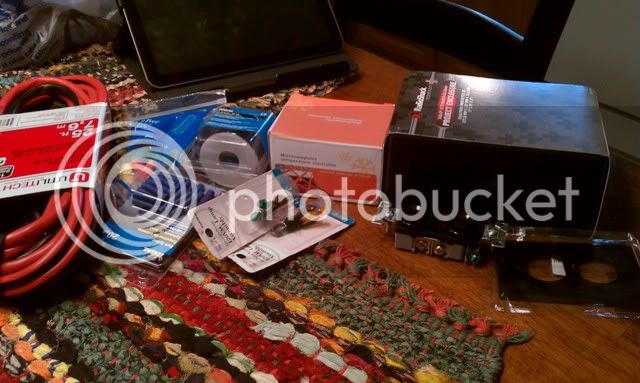
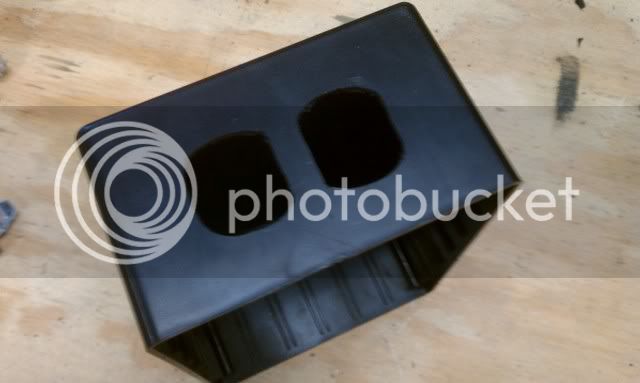
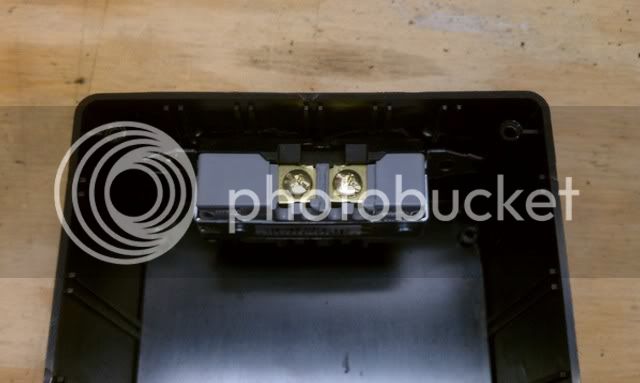
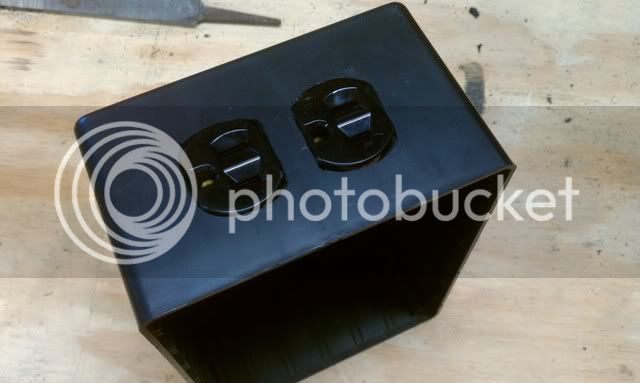
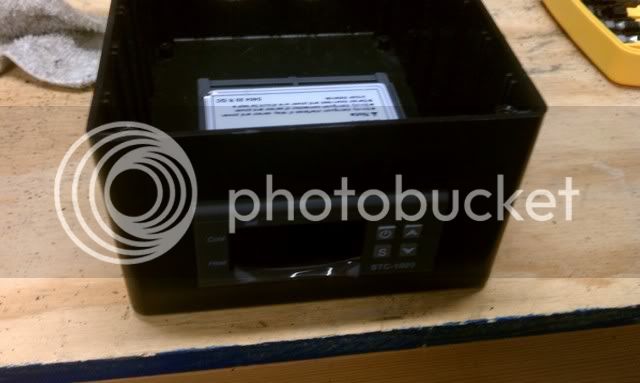

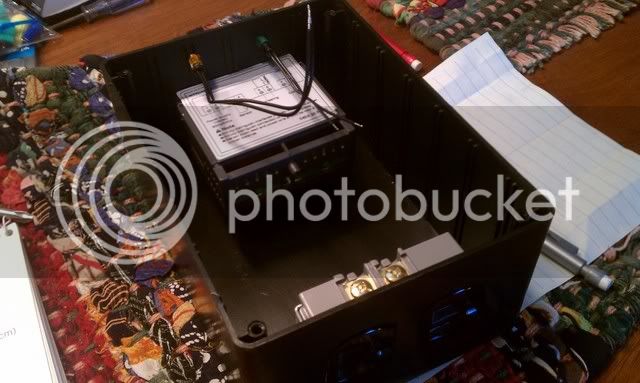
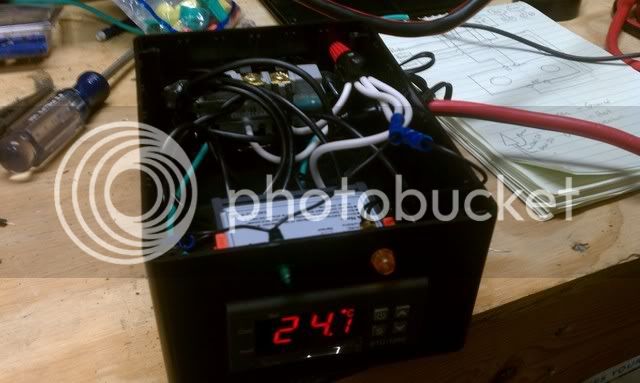
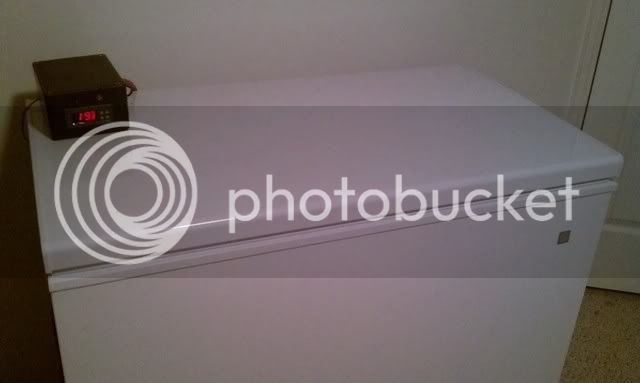









bovineblitz
Well-Known Member
^ looks great man! Nicely done.
im about to put CWI and Emjay both on my ignore list.
I think a mod needs to come in here and take out the trash to be honest.
we don't care whose dick is bigger or who went to school or who didn't
fact of the matter is why would you rent a 18 wheeler to move a small lawn mower when a pick up truck works just fine. yeah the 18 wheeler can do it, but why.
-=Jason=-
I think a mod needs to come in here and take out the trash to be honest.
we don't care whose dick is bigger or who went to school or who didn't
fact of the matter is why would you rent a 18 wheeler to move a small lawn mower when a pick up truck works just fine. yeah the 18 wheeler can do it, but why.
-=Jason=-
bovineblitz
Well-Known Member
fact of the matter is why would you rent a 18 wheeler to move a small lawn mower when a pick up truck works just fine. yeah the 18 wheeler can do it, but why.
Cuz you have a free 18 wheeler sitting around doing nothing?
barleydude
Member
^ looks great man! Nicely done.
Thanks! It was a fun little project. I've done a bit of electrical stuff before, so it went pretty smooth. Got the temp set around 40F and moved the keg in to its new home. Finally freed up my kitchen fridge! This will get me by while I plan the full freezer to keezer project
That makes sense, but the guy was telling someone else to go find an 18 wheeler to use because that's what he is doing since he already had one sitting around.Cuz you have a free 18 wheeler sitting around doing nothing?
That exchange was pretty useless, but at least some newbie won't be running around asking geeks for some rare 12V laptop supply to use, or worse burning his fan up with a more common 20V one.
Then again, this thread became fairly useless for finding information long ago. There were at least 3 people on here in the last week that ordered the 220V model.
If you want to get the mods involved, have them make a wiki/sticky entry as the first post where the vital info can be easily located. Not sure what the forum tools used here allow, but I have seen it elsewhere.I think a mod needs to come in here and take out the trash to be honest.
cwi said:That makes sense, but the guy was telling someone else to go find an 18 wheeler to use because that's what he is doing since he already had one sitting around.
That exchange was pretty useless, but at least some newbie won't be running around asking geeks for some rare 12V laptop supply to use, or worse burning his fan up with a more common 20V one.
Ah... well I can agree with this. I wasn't suggesting that people go out of their way specifically to find a laptop charger.
And the whole argument itself was beyond silly. You initially got offended because I responded as if you didn't understand some pretty basic stuff, but I had not intended to offend... you simply hadn't made it clear why you thought a laptop charger would be much more wasteful, and so I had thought you were misunderstanding those basic principles, and was merely trying to be helpful. It was NOT to insult your intelligence or call into question your education or qualifications... I don't know you, so you can't expect me to just automatically know your particular level of understanding. I went with the safer bet, and I'm sorry that it apparently offended you.
However, the silliest part of all this is the speculation-laden novels we both bothered to keep posting. And the reason I'm referring to it all as speculation is that the answer to this is really simple to find out... it doesn't take much to irrefutably demonstrate just how much more wasteful (if at all) that laptop chargers can be. All one has to do is measure the draw of both types of adapters while running the exact same fan at 12V, and compare them.
And so, not so much to continue the argument as to satisfy my own curiosity and perhaps provide the forum with some useful data, that's exactly what I'm going to do. Compare the actual real-world numbers, and everything else becomes utterly meaningless.
kickrjason
Well-Known Member
Man this thread is so off topic i am tempted to not update with my build photos.
I went with a 6X6X4 utility box from Lowes. I wanted some airspace because the little unit got pretty warm while i was testing it.
I wired mine to power two separate outlets. one on the hot cycle and one on the cold. I have two PC fans on an old cell phone charger that i plugged in as well as the A/C unit.
I also grabbed a mono audio headphone plug and jack from radio shack. wired the probe up with those so i can remove it if necessary.


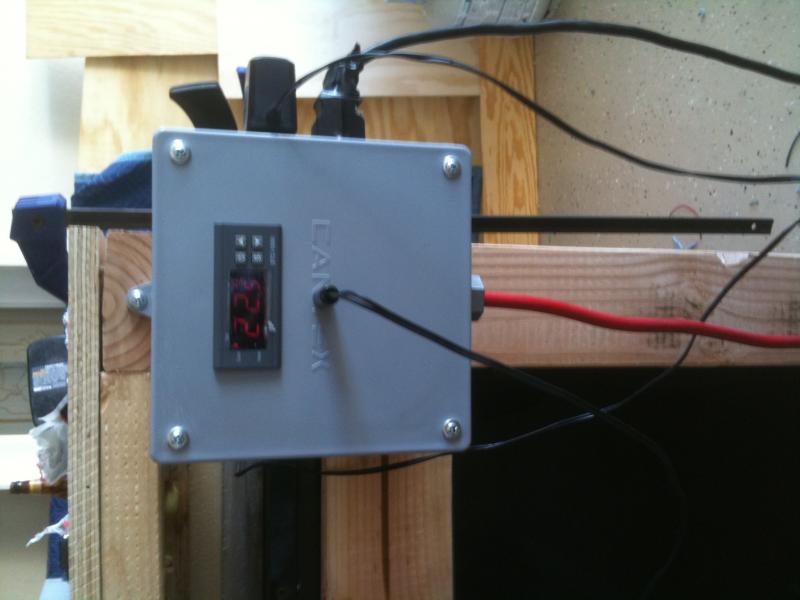

I went with a 6X6X4 utility box from Lowes. I wanted some airspace because the little unit got pretty warm while i was testing it.
I wired mine to power two separate outlets. one on the hot cycle and one on the cold. I have two PC fans on an old cell phone charger that i plugged in as well as the A/C unit.
I also grabbed a mono audio headphone plug and jack from radio shack. wired the probe up with those so i can remove it if necessary.




Ah... well I can agree with this. I wasn't suggesting that people go out of their way specifically to find a laptop charger.
No, but the other guy was which is what my initial post was about.
I was trying to keep it to a simple example without talking about inverse %eff vs %utilization relationships and so forth.
I wasn't so much offended by having additional instructive info (even if I didn't need it), it was that the info added nothing but confusion, and attempted to downplay my point about efficiency. If you were a power supply designer and could provide some current real world numbers, that would have been useful. I hate power engineering, and am just going off memory for some graphs of efficiency for various supplies, and they all tanked at <20% utilization.
That would provide some good data, but it is a small sample. There is a lot of variability among supplies. If you are using a modern (switching) 5W wall wart, it will almost surely have less total draw than a modern 150W laptop brick (also switching) used at <5% capacity. The older laptop bricks and linear wall warts are all over the map on efficiency.All one has to do is measure the draw of both types of adapters while running the exact same fan at 12V, and compare them.
And so, not so much to continue the argument as to satisfy my own curiosity and perhaps provide the forum with some useful data, that's exactly what I'm going to do. Compare the actual real-world numbers, and everything else becomes utterly meaningless.
Yeah, I realize that. Mine would both be VERY modern examples - both manufactured in 2011 (purchased weeks apart) and both even have a voltage selector - so it should at least give a realistic picture.
I'm not sure how easy it would be to find an older laptop adapter that'll do 12V though (as I believe that's really only used for netbooks) so in practical terms I doubt it matters much anyways.
I'm not sure how easy it would be to find an older laptop adapter that'll do 12V though (as I believe that's really only used for netbooks) so in practical terms I doubt it matters much anyways.
I went with a 6X6X4 utility box from Lowes. I wanted some airspace because the little unit got pretty warm while i was testing it.
I also grabbed a mono audio headphone plug and jack from radio shack. wired the probe up with those so i can remove it if necessary.
That is a nice setup. The utility box seems like a better solution than the radio shack project box. I couldn't find one in home depot before the GF started to whine, so I just used a double outlet box. I need to redo it with one of these.
I am seeing the advantages of a removable sensor the more I use this. That will be part of the redo as well.
I was surprised at the heat output as well. They claim 3W for the head unit. The components are probably heat tolerant to 60C or so, so it shouldn't be an issue even in a small box.
Yeah, I realize that. Mine would both be VERY modern examples - both manufactured in 2011 (purchased weeks apart) and both even have a voltage selector - so it should at least give a realistic picture.
I'm not sure how easy it would be to find an older laptop adapter that'll do 12V though (as I believe that's really only used for netbooks) so in practical terms I doubt it matters much anyways.
If you have a low power wall wart with adjustable V settings, it will probably be most efficient at the highest V setting, but that is a just a guess that they hacked up a voltage divider to get the different voltages.
Weight is usually a good indicator if the wart is a switching design. Cell phones seem to come with lighter adapters than other devices.
Same principle goes for some aftermarket laptop bricks that are light(er). I think they may use PWM or something, and are very efficient across the entire output range.
Similar threads
- Replies
- 14
- Views
- 3K





















![Craft A Brew - Safale BE-256 Yeast - Fermentis - Belgian Ale Dry Yeast - For Belgian & Strong Ales - Ingredients for Home Brewing - Beer Making Supplies - [3 Pack]](https://m.media-amazon.com/images/I/51bcKEwQmWL._SL500_.jpg)


















